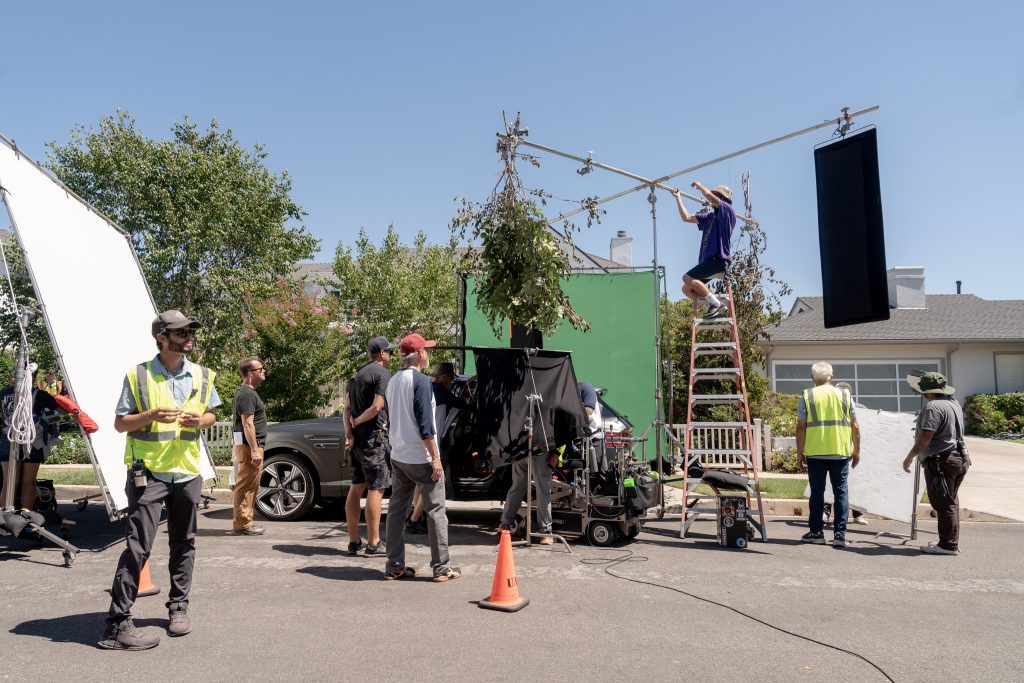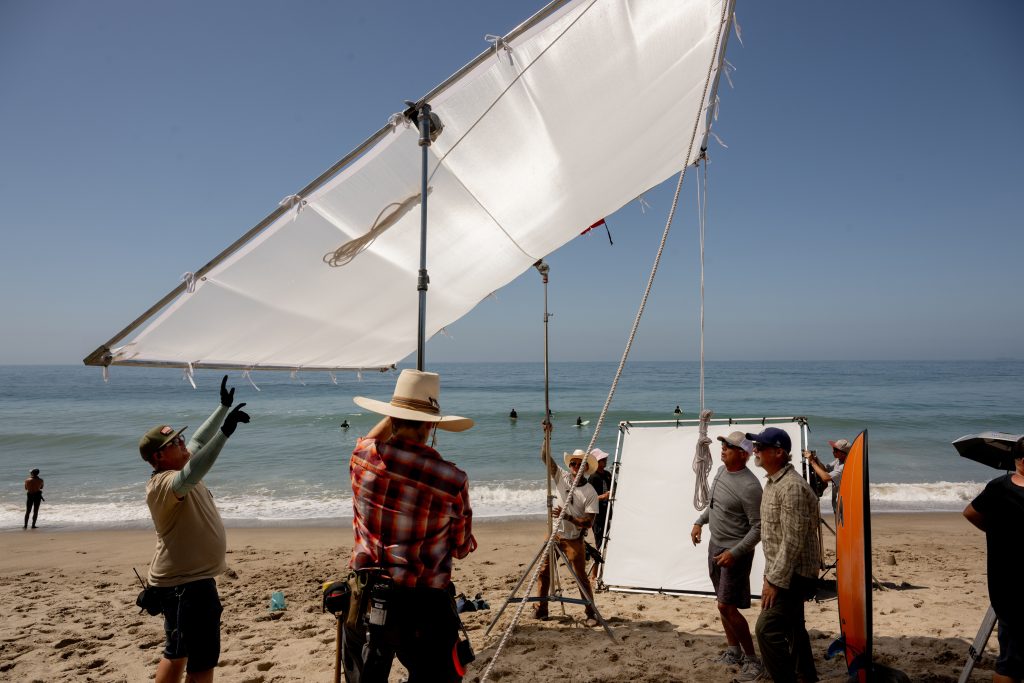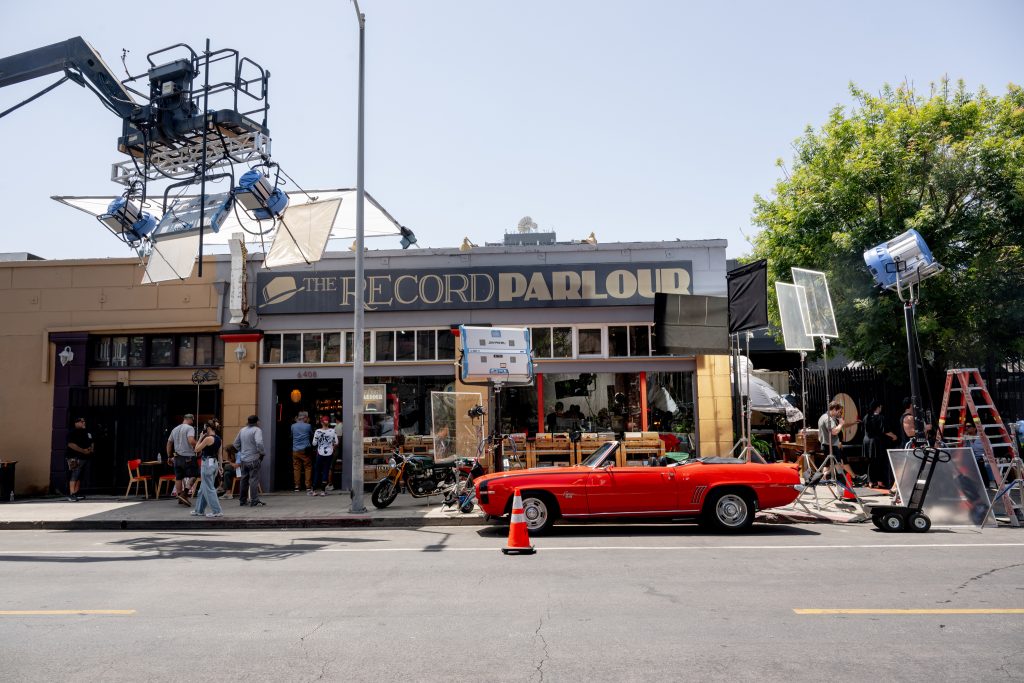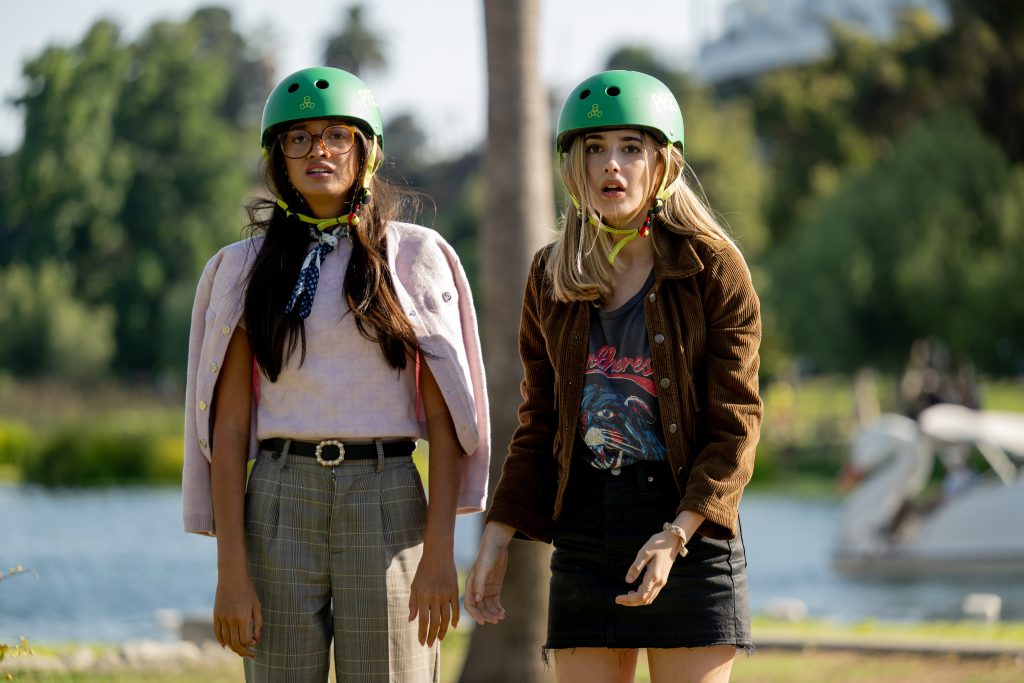Audiences have been riding a wave of nostalgia with Freakier Friday in theaters.
Not only does the beloved mother daughter duo of Jamie Lee Curtis and Lindsey Lohan return to the silver screen as Tess and Anna Coleman, but Los Angeles also reprises its role as the iconic backdrop to the sequel of the 2003 cult classic.
In the Q&A below, Diane Sabatini, SVP, Physical Production, The Walt Disney Studios, shared more about how the unique charm of filming a project entirely in Los Angeles added to the film and how production brought it to life on screen.
Freakier Friday was filmed entirely in LA — what were some of the most unexpected or serendipitous moments that could only have happened in this city?
Having the proximity and access to such great locations proved especially meaningful to our storytelling. Two prime examples include featuring the original Coleman House and Eric Davies’ restaurant in the film.
We revisited the Coleman House from the 2003 film in the Pacific Palisades. The location team dove deep into our archives to track down the owners and fortunately they were amenable to filming there. We also used driving shots within the same neighborhood to add scope and scale.
While the home was immortalized through Freaky Friday and Freakier Friday, it was tragically lost in the wildfires that affected the LA area in January 2025. Thankfully, the owners of the home are safe.
The location for Eric’s restaurant in the film needed to be close to the Wiltern Theater for the final sequence. We were fortunately able to find one right down the street from the Theater; very few cities, if any, could have delivered that kind of proximity and authenticity.

From reuniting a cast after two decades to showcasing beloved Los Angeles landmarks, the heartbeat of this movie is nostalgia. How did you strike a balance between honoring the first film while introducing a fresh new perspective? How do you bring that vision to life through production?
It really was accomplished in many ways because of the depth and breadth of locations selected.
There were many discussions around which locations to use from the 2003 film, particularly the Coleman House and High School that Anna attended. Originally, the script included only 12 locations, and most were the interiors of the Coleman House. After 20 years, it would have been perfectly reasonable to have Tess move, but we felt it would be nice for fans to see the characters in some of their old environments.

Ultimately, the director’s vision shifted to reach beyond the familiar and expand to show parts of Los Angeles that you don’t usually see on the screen. What’s familiar are the beaches, Beverly Hills palm trees, the Hollywood sign — but we wanted to show a lot of the East Side: Echo Park, Los Feliz, Larchmont, South Pasadena, and Altadena.
The final concert scene was written to take place in a large concert venue like the Forum. We wanted the music venue to be iconic yet different, and the conversation became about the story of Ella — about who she is and her magnitude as a performer. Ultimately, the filmmakers chose the Wiltern because of its history, size and vibe, which met the filmmakers’ vision for Ella.
Can you describe what that experience was like for the cast and crew members who call LA home?
The film was met with so much enthusiasm and gratitude — not only because of the genuine nostalgia and affection people have for the title, but also because it arrived at a time when many crew members truly needed the work. It was meaningful on multiple levels, both personal and professional.

Lindsey Lohan had shared that the sequel ‘feels like a tribute’ to the areas impacted by the wildfires that swept through LA early this year, having shot a number of scenes in the Palisades and Malibu. How does featuring these specific California locations contribute to the film in a way that filming elsewhere might not have achieved?
In addition to the beautiful value these locations bring to the story, the film is an opportunity to document and commemorate those places. The Supervising Location Manager photographed many homes during initial scouting and later gave unused photos to several wildfire-affected families who he learned had no property documentation.
How many local vendors or small businesses did the production partner with during filming? Any particularly memorable collaborations with LA-based companies?
We estimate upwards of 150 vendors and businesses that provided goods and services over the course of pre-production and production including residential and commercial businesses that were used as practical locations.
LA remains a vital entertainment hub which gives filmmakers unfettered access to technicians and specialty camera equipment that might otherwise be out of reach financially or logistically if filming elsewhere. For example, the in-camera visuals for the switch scene were achieved working with a local camera support company whose technicians are based here and available at a moment’s notice. Production also hired the team from one of the leading camera vehicle companies, Allan Padelford. That is a level of technical expertise that is truly only available to us here in Los Angeles.
